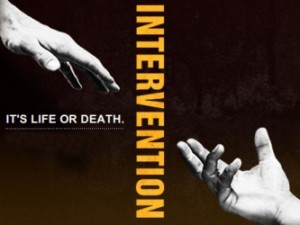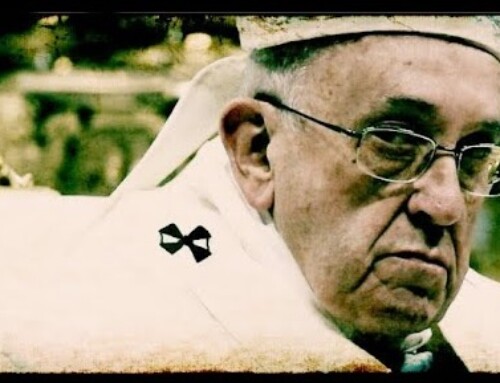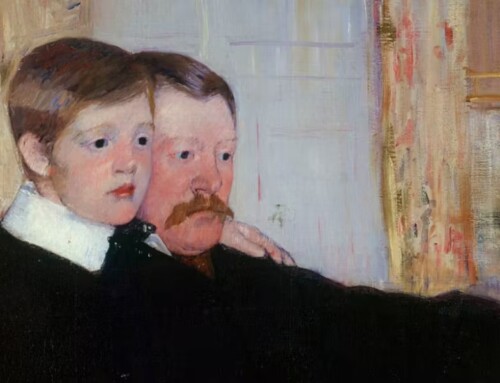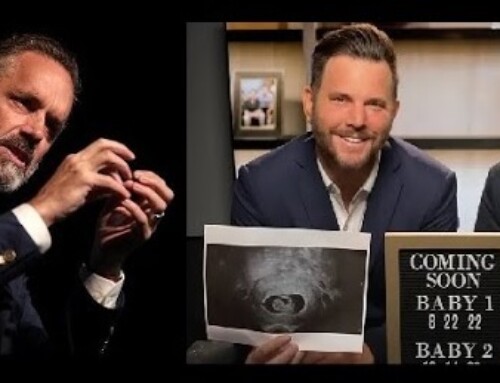The best show on TV right now is A&E’s “Intervention.” It is thoroughly compelling and incredibly difficult to watch. Dealing primarily with alcohol and drug addiction, the hour long program features one or several addicts, their often horrendously sick and violent lives, the toll their addictions have taken on those around them (often their own children,) how their family members frequently facilitated through co-dependency their addictions, and the efforts of those who love them to offer the addicts help and recovery. What I find most compelling about the show is that it does not treat the addict as a single individual, but as composite product of an often agonizingly dysfunctional family environment. And, this is where the show becomes its most fascinating: right from the beginning – they quickly introduce the addict, where they are now – usually in some filthy drug den or on the street, then, immediately they cut to an adorable picture of the person as a new-born or as a child – then, begins their story.
offer the addicts help and recovery. What I find most compelling about the show is that it does not treat the addict as a single individual, but as composite product of an often agonizingly dysfunctional family environment. And, this is where the show becomes its most fascinating: right from the beginning – they quickly introduce the addict, where they are now – usually in some filthy drug den or on the street, then, immediately they cut to an adorable picture of the person as a new-born or as a child – then, begins their story.
From childhood through to the present, by interviewing everyone from parents, spouses, boyfriends and girlfriends, aunts and uncles, siblings, and friends, we learn details about the addict: their lives before addiction, what brought them there, and their current pathetic state. On almost every show, someone, usually a parent, will reveal some traumatic event which occurred in the life of the addict: a death, molestation, a bad relationship, divorce, a family history of addiction and abuse. And, in this admission, to not chock up addiction to a genetic disease or predisposition, is the show’s true greatness; again, most of the time, someone close to the addict (once more, usually the parent) admits to their own failings: how their treatment of the addict, how their negligence or abuse, and how their own addictions caused and or contributed to the suffering of their now damaged child.
At the intervention, all are gathered. Unsuspecting, the addict walks in. If they are amicable and not violent, as they sometimes are, the addict must listen as each family member and friend read aloud a letter detailing their concerns and again admitting to their own failings. Lastly, a free stay at a re-hab clinic is offered; most go – some refuse. The last few minutes of air-time are spent quickly running-down what happened to the addict once they were admitted. Most of the scenarios include either a full or partial recovery, a complete relapse, and a return to co-dependency in the still dysfunctional family.
While watching, I am always fascinated by the distinct similarities between the childhood trauma, inability to cope with the resulting pain, and the self-destructive actions of drug addicts as compared with the remarkably parallel stories often told by active homosexuals. Like drug addicts, gay men and women commonly are survivors of childhood abuse; for instance:
From May 1989 through April 1990, 1001 adult homosexual and bisexual men attending sexually transmitted disease clinics were interviewed regarding potentially abusive sexual contacts during childhood and adolescence. 37% of participants reported they had been encouraged or forced to have sexual contact before age 19 with an older or more powerful partner; 94% occurred with men. Median age of the participants at first contact was 10; Median age difference between partners was 11 years.
L.S. Doll, “Self-Reported Childhood and Adolescent Sexual Abuse Among Homosexual Bisexual Men,” Child Abuse and Neglect 16, no 6. (1992) pp. 855-64.
The Archives of Sexual Behavior reports “One of the most salient findings of this study is that 46% of homosexual men and 22% of homosexual women reported having been molested by a person of the same gender.”
Marie E. Tomeo, “Comparative Data of Childhood and Adolescent Molestation in Heterosexual and Homosexual Persons,” Archives of Sexual Behavior 30 (2001): 539.
The Centers for Disease Control report that 78.7% of all HIV diagnoses in men occurred among the homosexual population vs. 11.8% in heterosexual men. The rate of HIV diagnosis in homosexual men is 6.67 higher than in heterosexual men. Using the CDC population estimate of 4% of the population for homosexual men, that means that homosexual men are 160X more likely to contract HIV then heterosexual men. To put this increased risk in context, consider what the CDC tells us about risk of lung cancer for men who smoke: 23X higher than for those who don’t.
Therefore, the case is to be made for “gay interventions.” They would follow much the same format as those depicted in the show for addicts: requiring, significantly, the full cooperation of the family, specifically the parents – most importantly, in the case of gay men: the father, and, in the case of gay women: the mother. I think it would be incredibly cathartic and healing for everyone involved if those inner pains, and those dark family secrets are exposed to the light of truth. Parents, for example, the father must apologize to their gay son for what they did to them. And, like on the TV show, this should be done ideally, but not necessarily, under the supervision of a qualified therapist, preferably, also under the presence of a Catholic priest – or, if they are not Catholic, a trusted minister. Lastly, a way out of the gay lifestyle must be offered: a loving home to return to, therapy, and a reintroduction to the Church and the healing power of the Sacraments. Then, I think, at that point of revelation, there is hope for change and healing. Because ever gay man I know, or ever knew, kept hidden some unspoken word: it could have been “father,” “rape,” or “porn.” It’s like the demon’s name the exorcist tries to uncover in the possessed. Once it’s revealed – the power is gone. In the truly gay indoctrinated – the most difficult thing to do is admitting that: “Yes, I was hurt.” Because, then, the reason for the homosexuality is explained. Once that’s done – like on “Intervention” the choice becomes yours: do I stay in this life and waste away, or, do I face my fears and deal with the pain once and for all?
Resource:
www.catholictherapists.com





Dear Joe, do you think viewing porn at a young age can warp young minds? So much so that they may start to have gay feelings and believe they are gay?
Yes, I made an entire video on this subject: https://josephsciambra.com/2014/02/porn-made-me-gay.html